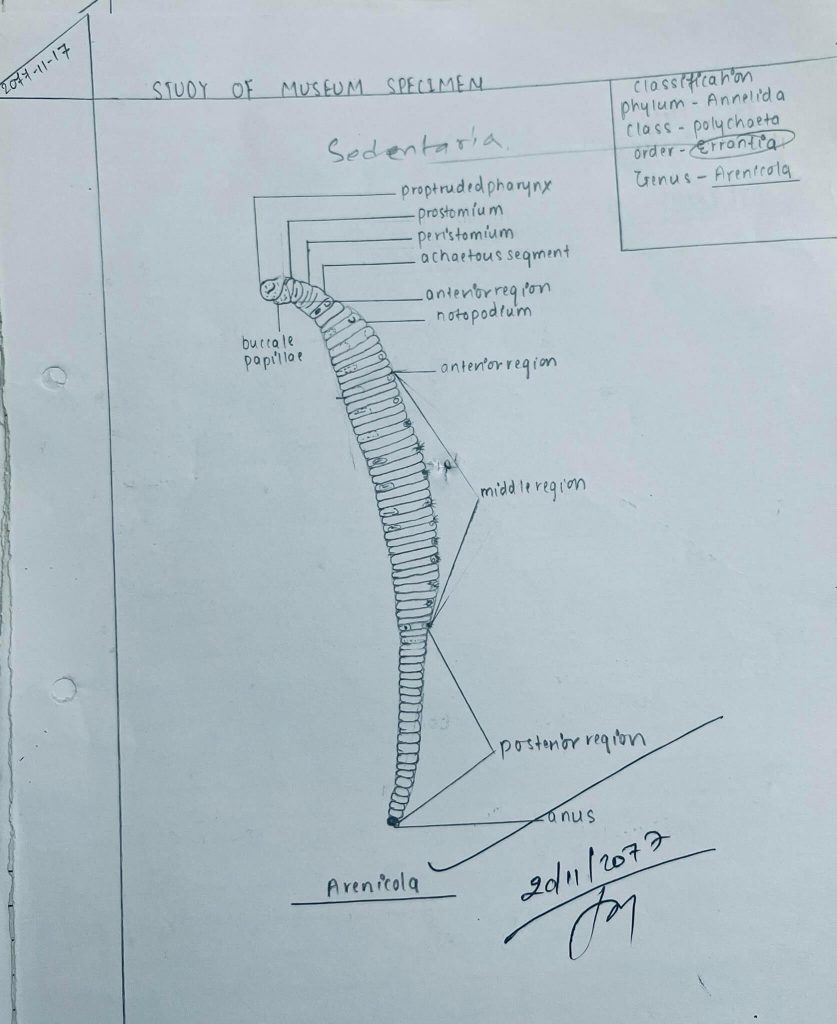Comments of Arenicola
Distribution:
Arenicola is distributed in Europe and the U.S.A.
Habit and Habitat:
Arenicola is a marine worm that lives in U-shaped burrows of sand and mucus. It is found in Mediterranean and European shores.
General characters:
1. Arenicola is commonly known as lug warm or lobe-worm.
2. Body is stout, elongated, cylindrical worm- like measuring up to 20 to 25 cm in length and brownish or greenish in color.
3. Body is divisible into three regions, anterior middle and posterior.
4. Middle region or branchial region comprises thirteen segments bearing parapodia and branched gills.
5. Posterior region or post branchial region is much thinner consisting of a variable number of segments devoid of parapodia setae and gills.
6. Mouth lies ventral to the prostomium.
7. Nephridia are six pairs.
8. Arenicola is generally used as bait in fishing.
Economic Importance:
Arenicola can be beneficial by negatively impacting the population of small rodents and insects.
Diagram of Arenicola

arenicola
